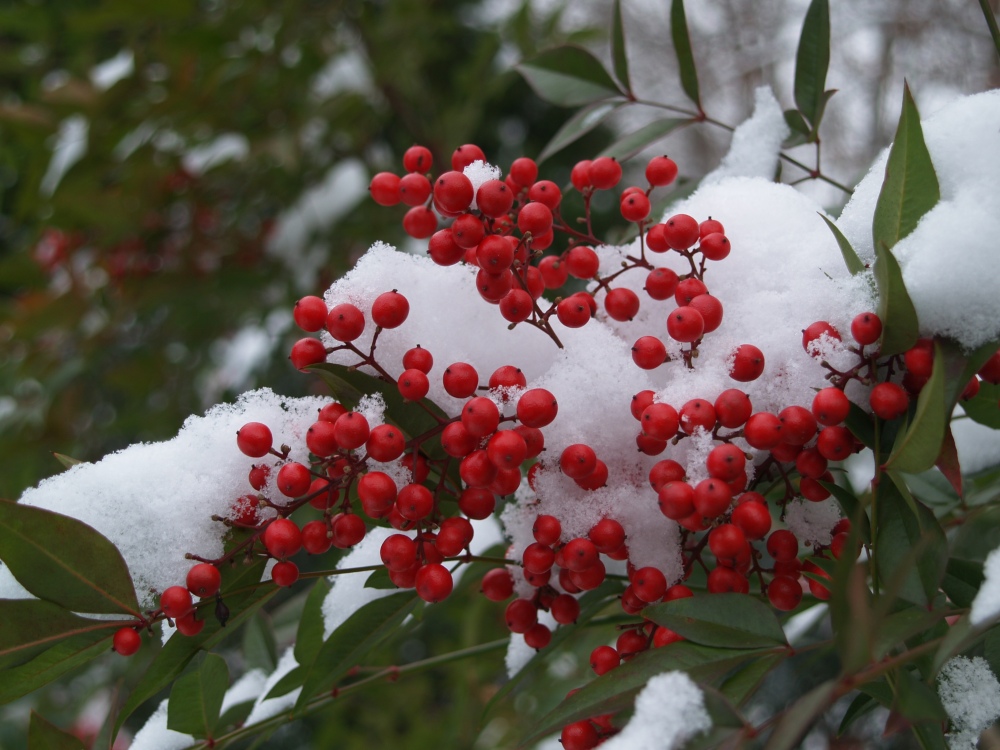This was inevitable, I suppose. I’ve been dismayed in recent weeks that hellebores were poised to flower with only another few days of slightly less frigid temperatures. A single day of relative warmth last week was not enough, and now they will be buried by snow with little chance that it will melt for another week.

Not that this doesn’t happen frequently, and in fact hellebores were buried a year ago, and a few years before that by much deeper snow than this. Fortunately, this only delays seeing the blooms, which eventually emerge unscathed through the melting snow. Then, perhaps as a reward for the gardener’s patience, hellebores will typically begin flowering within a day or two due to the bright sun or warmer temperatures that melted the snow.
One consequence of this snow is that the foliage of hellebores is not likely to be trimmed off prior to flowering. The blooms are more evident once the leathery leaves are removed since flowers are generally nestled near the base of the clump. With the spell of cold that is coming in it’s probable that the old leaves will take a beating, and already they are looking a bit shabby. So, it will be best to remove them, and it is easiest to cut them before the flowers open and are in the way with the spring leaves just below.

Oh well, it’s not as if I was running out to cut the foliage and was suddenly stopped by the snow. I’ve put this chore off since early winter, and it can wait until the snow melts. Or, perhaps even until the hellebores are in full bloom. This is how it goes more often than not.
I am not feeling particularly patient at the moment, so I’ll whine about this snowfall for a few days and hope it goes away more quickly than expected. Besides clearing a path to the top of the driveway, I have no plans to do anything at all about the garden.
With cold temperatures, the snow is light and not very deep, and certainly it is not a problem. With more extreme cold expected in the next few days it will insulate to protect roots, so there is some useful purpose for the snow after all.

After clearing the drive, and in a fit of energy, also the front walk, I’ll gaze out the kitchen window as bluejays and cardinals contest for position at the birdfeeder. Chickadees clean up the scraps that fall beneath the feeder, and probably the possum that as been a frequent visitor in recent weeks will return to scare off the ground feeding birds.
The possum seems little concerned by my presence, and even as we occasionally stumble upon each other as I make my rounds, the beast ambles away without a trace of urgency. I was at first concerned by the appearance in daylight hours of this nocturnal creature, but my wife assures me after a quick Google search that this is not unusual.

With heavy feeding at and beneath the feeder this winter, the foliage of the periwinkle ground cover has been stripped bare. I cleverly planned when the feeder was placed that the low evergreen would disguise the fallen seeds, and that perhaps it would deter the thousands of seedlings that result as a consequence. Seedlings have not been so big a problem in recent years since the feeder was placed in this lilac tree, but now the foliage is more sparse and I expect a bit more trouble in the spring.
With the flowering of hellebores now on hold, there are no greater concerns.